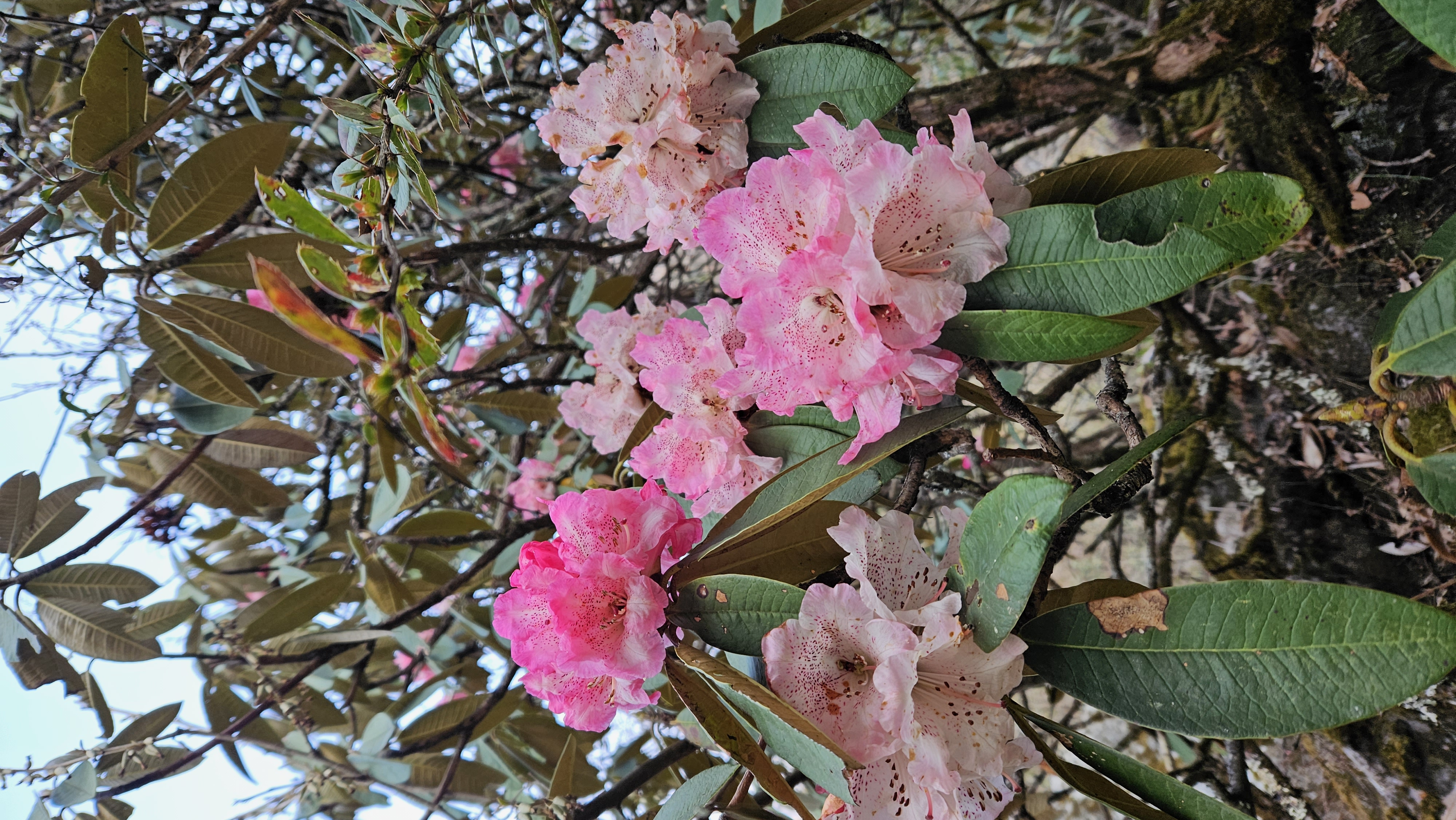Imagine you have hiked for hours eagerly wanting to see the trees full of pink, red and white Rhododendron flowers. But once you reach the destination, you see nothing but the trees with bare branches. How does that feel? Sad, right? But this is the reality of many trees in Nepal these days.
Rhododendron season has arrived and many of us have already planned or visited the places popular for Rhododendron blooms. But the question is: can’t we simply enjoy watching the flowers sway in the wind without plucking them? Too often, people pluck the flowers and even break the branches to display them on their social media posts. These flowers, in their most vibrant phase, are plucked just to be thrown away.
Instead of discarding them, Rhododendron flowers could be used for medicinal purposes to treat pain, inflammation, and skin ailments, or processed into powders for pickles. During my visit to Taplejung recently, I saw the locals drying Rhododendron flowers to sell in the market for such uses.

Recently, a TikToK clip showing a person breaking the branches of a rhododendron tree to pluck the flowers went viral. It was met with angry comments; many demanded that the person should be punished for his act. Sadly, many people do not understand the value of Rhododendron flowers. More than just our national flower, Rhododendrons are home to thousands of birds and food source for bees and butterflies. They are a crucial part of the ecosystem.
Research has shown that once the flower is plucked, it is very hard to bloom from the same tree or it might take years to bloom again. It may be noted that Chandannath Municipality in Jumla has banned plucking of the Rhododendron flowers since 2019.

“We want to protect our Rhododendron forests because many people have been plucking their flowers and breaking their branches,” Birkha Bahadur Sarki, chairman of Dhalthapala Community Forest, told Khabarhub.com.
To protect the Rhododendron flowers, we must be aware of ourselves and educate others to not pluck Rhododendron flowers, and to admire them in the forest—where they belong. March to May is the best time for the Rhododendron trek in Nepal. Here are the five best to go see them.
Ghorepani-Poon Hill Trek
For those looking for the best place for Rhododendron trek, the Ghorepani-Poon Hill trek could be an ideal option. The trail passes through the dense Rhododendron forests. These forests would come alive during the spring season as it is the time when the rhododendron flowers with vibrant colors bloom. The forests will be blanketed by rhododendron flowers.
With the access of the road, the trek nowadays starts from Ulleri. After walking for around four to five hours, one can reach Ghorepani (2,860 meters). The next morning, you can hike to Poon Hill (3,210 meters) from where you get the spectacular view of Annapurna Himalayan Range, breathtaking view of sunrise, and Rhododendron forests.

Langtang Valley Trek
The Langtang Valley trek offers trekkers truly a magical experience of walking through lush Rhododendron forests. The month of March to May (spring season) is generally the best time to do this trek. This trek starts from Sybrubesi, four to five hours drive from Kathmandu, and it will take around five days to complete. Apart from beautiful Rhododendron forests, you get to trek through quaint villages, sparkling rivers, and witness gigantic snow capped mountains.

Tinjure-Milke-Jaljale trek
Located in Taplejung, Terathum, and Sankhuwasabha districts, the Tinjure-Milke-Jaljale trek is famous for its vibrant Rhododendron forests. Out of 31 species of Rhododendron flowers, 28 are found in the forests of TMJ. So this region is rightly called the capital of Rhododendron. Furthermore, the trek offers a chance to learn about the local culture and see spectacular mountain views of Makalu, Kanchanjunga and Everest. The trek starts from Hile, north of Dharan, and takes around eight to 10 days to complete.

Jugal Himal Base Camp Trek
Jugal Himal Trek is famous for the breathtaking mountain views and Rhododendron forests. This trail winds through lush Rhododendron forests, cascading waterfalls, serene mountains, and Sherpa villages. Mt Phurba Ghetchu, Gyalzen Peak, and Mt Jugal 1, 2 and 3 of Jugal Himalayan Range can clearly be seen on this trek. The trek starts from Tembathang and takes around 10 days to complete.

Peaky Peak Trek
Peaky Peak, which is situated in the lower Khumbu region of Solukhumbu district, is relatively a new trekking destination, offering panoramic views of Mt Everest, Mt Makalu, and Mt Kanchenjunga. This trail traverses through enchanting Rhododendron forests, which burst into a riot of colors during the spring season. Along with the Rhododendron forests, the trek promises an off-the-beaten-path experience for those who wish to avoid crowded and commercial trekking destinations. This trek starts from Dhap (2,850 meters), around six hours drive from Kathmandu, and ends in Phaplu.

Rhododendrons are a gift of nature. More than just a national symbol, they are vital to the ecosystem and bring joy to trekkers. Let’s appreciate them mindfully and preserve them for future generations.








Photos: Achitra Thieng










